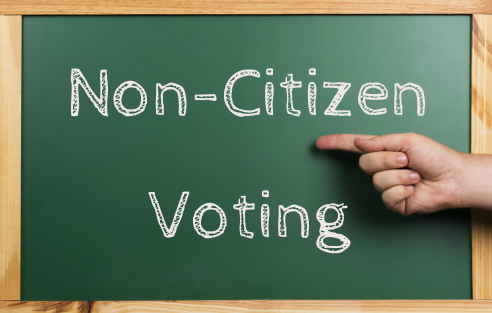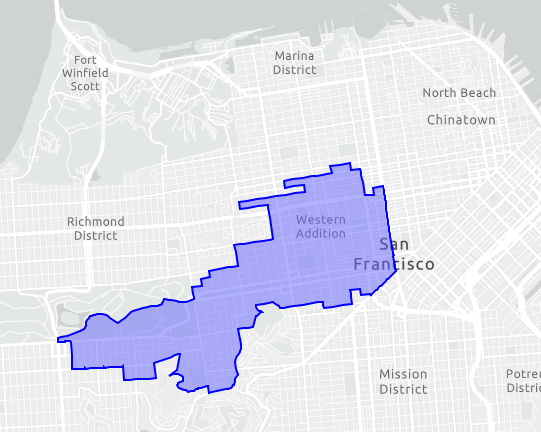
November 5, 2019 SF Unified School District Board Election
By Ruth Geos
One seat on the SF Unified School District Board is now open for special election on November 5, 2019: a three-way contest between Robert K. Coleman, Jenny Lam, and Kirsten Strobel. This is the one local race for which San Francisco non-citizens have the right to vote, regardless of immigration status, if they are parents to children in the system and are willing to formally register.
This right was established when San Francisco voters approved Proposition N in 2016, granting non-citizens with children in the SFUSD the right to vote in school board elections. Formally speaking, Prop. N became a part of the San Francisco Charter, Article XIII Elections, Section 13.111. New sections of the San Francisco Municipal Elections Code, §§ 1001-1005 were also adopted to regulate how the non-citizen registration and voting system would be handled separately from other local, state, and national elections where non-citizens could not vote. San Francisco citizen voters—whether parents or not—are also qualified to vote for Board of Education representatives.
Although declared a radical step by some when Prop. N passed, San Francisco’s adoption of limited voting rights for non-citizens is not as bold or as isolated as some may urge, and rather reflects the state of non-citizen rights and public participation that was common in the first part of American history. In early America, the suffrage pattern was to deliberately extend voting privileges to non-citizens, ending only in the 1920s in the wake of world events affecting political attitudes towards immigration.
Equating citizenship with the exclusive right to vote is not as accurate it may sound. In 1872, four years after the 14th Amendment was passed but 48 years before the 19th Amendment granting women full suffrage, Ellen Van Valkenburg appealed for the right to register to vote in Santa Cruz County. The California Supreme Court found that the US Constitution at that stage did not offer parity in voting to women, even to women citizens, parsing the difference between political and civil rights of citizens. It pointed out that the right to vote is as we grant it:
…unnaturalized foreigners were by State laws allowed to vote—following in this respect the early policy of the Federal Government, who, in the ordinance of 1787, for the government of the Northwestern Territory, had permitted the elective franchise to the unnaturalized French and Canadians, of whom the population of that Territory was then largely composed. It will be found that from the earliest periods of our history the State laws regulated the privilege of the elective franchise within their respective limits, and that these laws were exactly such as local interests, peculiar conditions, or supposed policy dictated…
Van Valkenburg v. Brown (1872) 43 Cal. 43, 50–5
In contemporary times, San Francisco is not the only municipality—nor even the first—to extend voting rights to non-citizens in school board or other local matters. The city of Chicago, and ten municipalities in Maryland, including Tacoma Park, provide for non-citizen voting in local school board elections, and other American cities have also pushed forward on this initiative. Internationally, a range of countries, including Canada, Norway, Sweden, Switzerland, and New Zealand, extend voting rights to residents who are not citizens, some even further than limited local participation.
The idea behind non-citizen voting in school board elections is to increase parental participation in public schools where their children are being educated. As advocates at the time of Proposition N pointed out, at least a third of all children in the SF public schools have immigrant parents, and these are the non-citizens who may not be otherwise represented. Some of these parents may be documented, with green cards, for example, and others undocumented, but all, as parents, have a stake in the allotment of school resources and development of school curriculum and policies.
This limited right to vote, however, comes with an implicit risk—as plainly stated in all San Francisco election materials:

The risk to families is compounded by the requirement that a non-citizen voter registration is valid for one school board election at a time; the San Francisco Municipal Elections Code §1002(d) requires that a new voter registration be submitted for each school board election by non-citizens.
Reports from the 2018 midterm election estimate that no more than 60 San Francisco non-citizens voted in the last school board election. Prop N included its own sunset provision, extending non-citizen voting rights only to the end of 2022, requiring the Board of Supervisors, with the input of the entire San Francisco community, to then decide whether to continue with this policy initiative. At least until 2022, non-citizen parents in San Francisco with children in the public schools are entitled to vote in school board elections—and perhaps that’s sufficient time, in the best of worlds, to resolve the inherent dilemmas and to decide whether we will uphold the right itself.
The registration deadline for all voters for the next November 5, 2019 election has passed; however, all San Francisco voters who missed this date are still permitted to go in person to register and vote a provisional ballot either at the City Hall Voting Center or the SF State voting Center to vote. Find more information at the SF Board of Elections, or call them at: (415) 554-4375.





